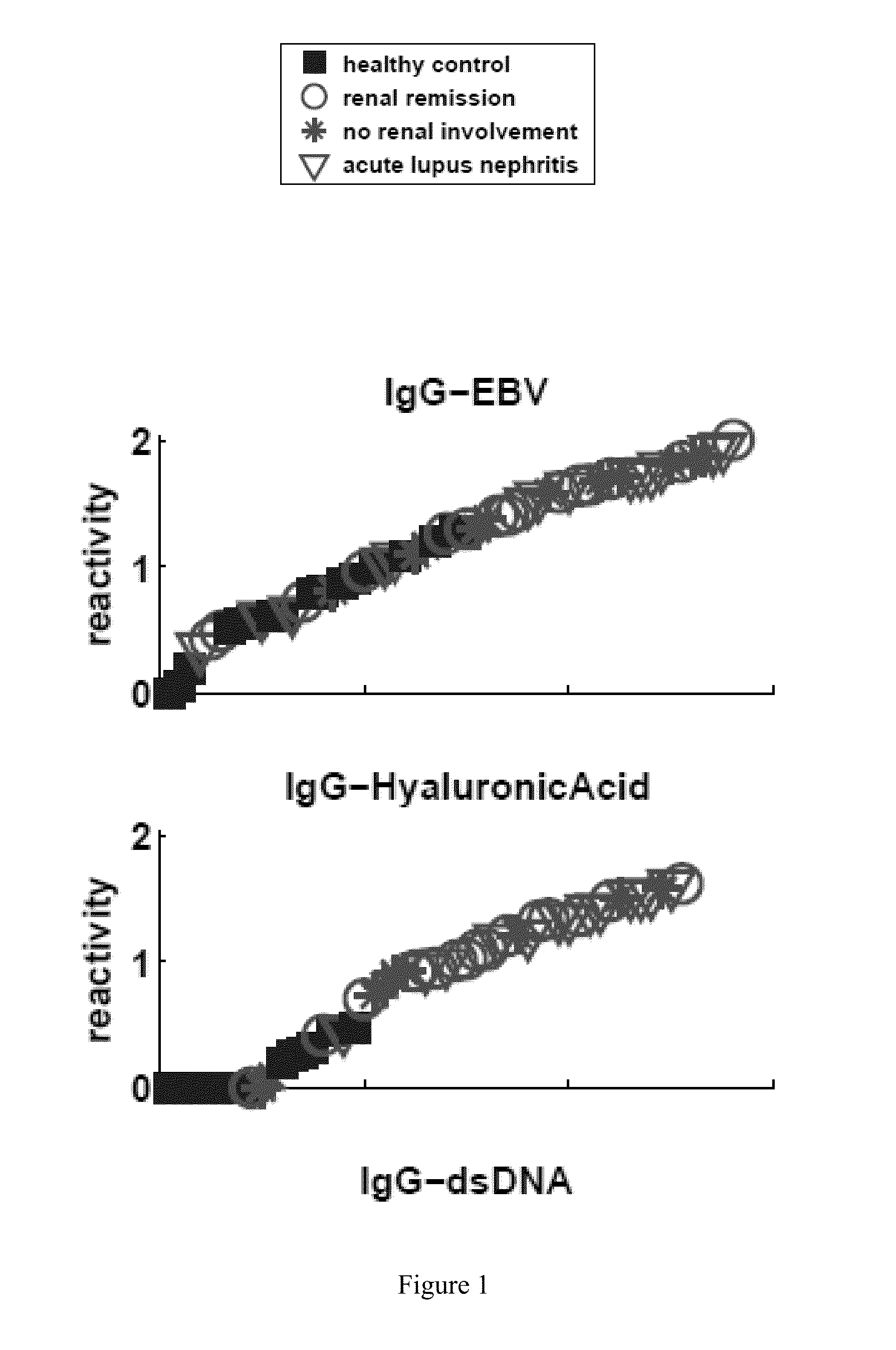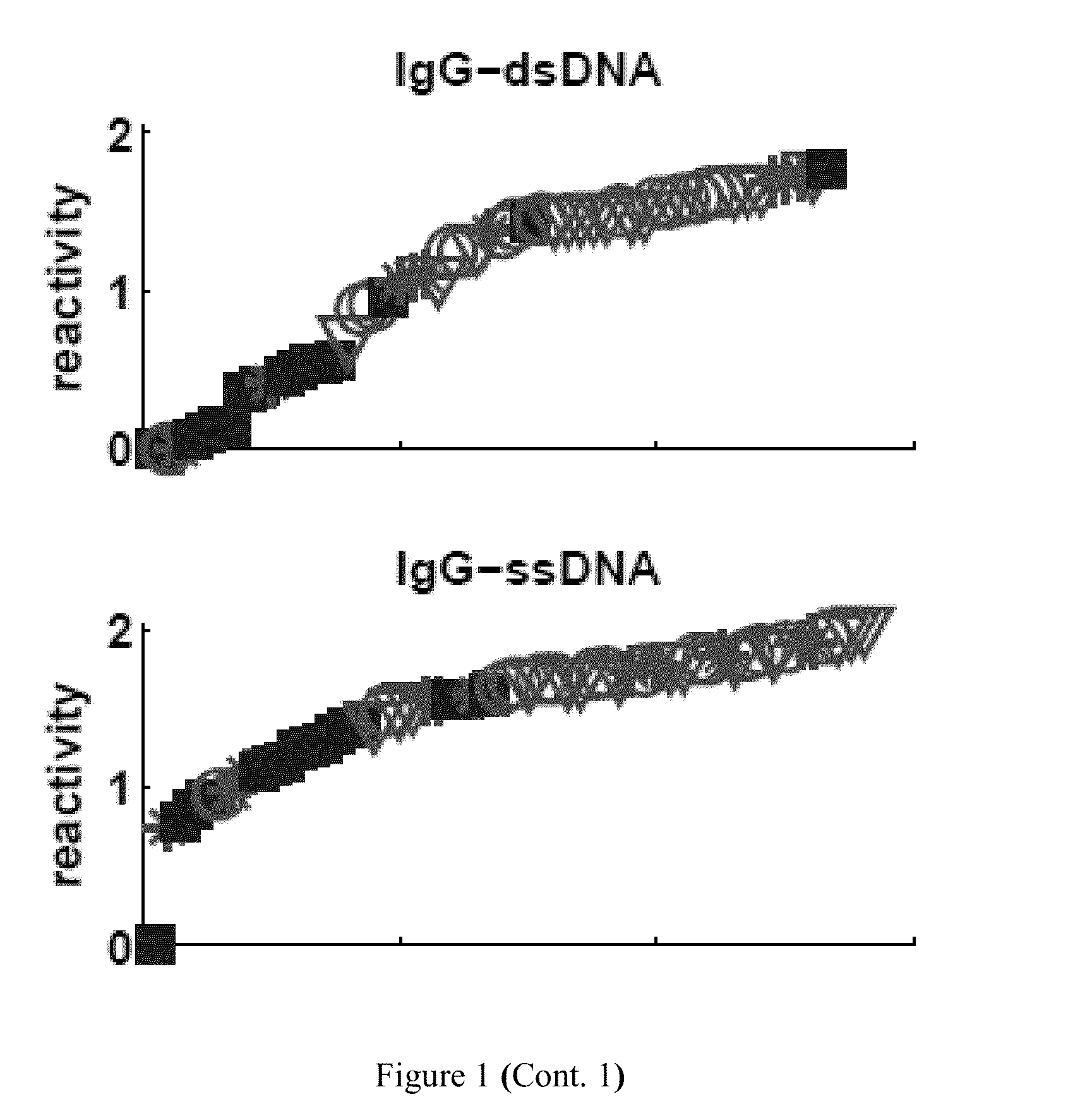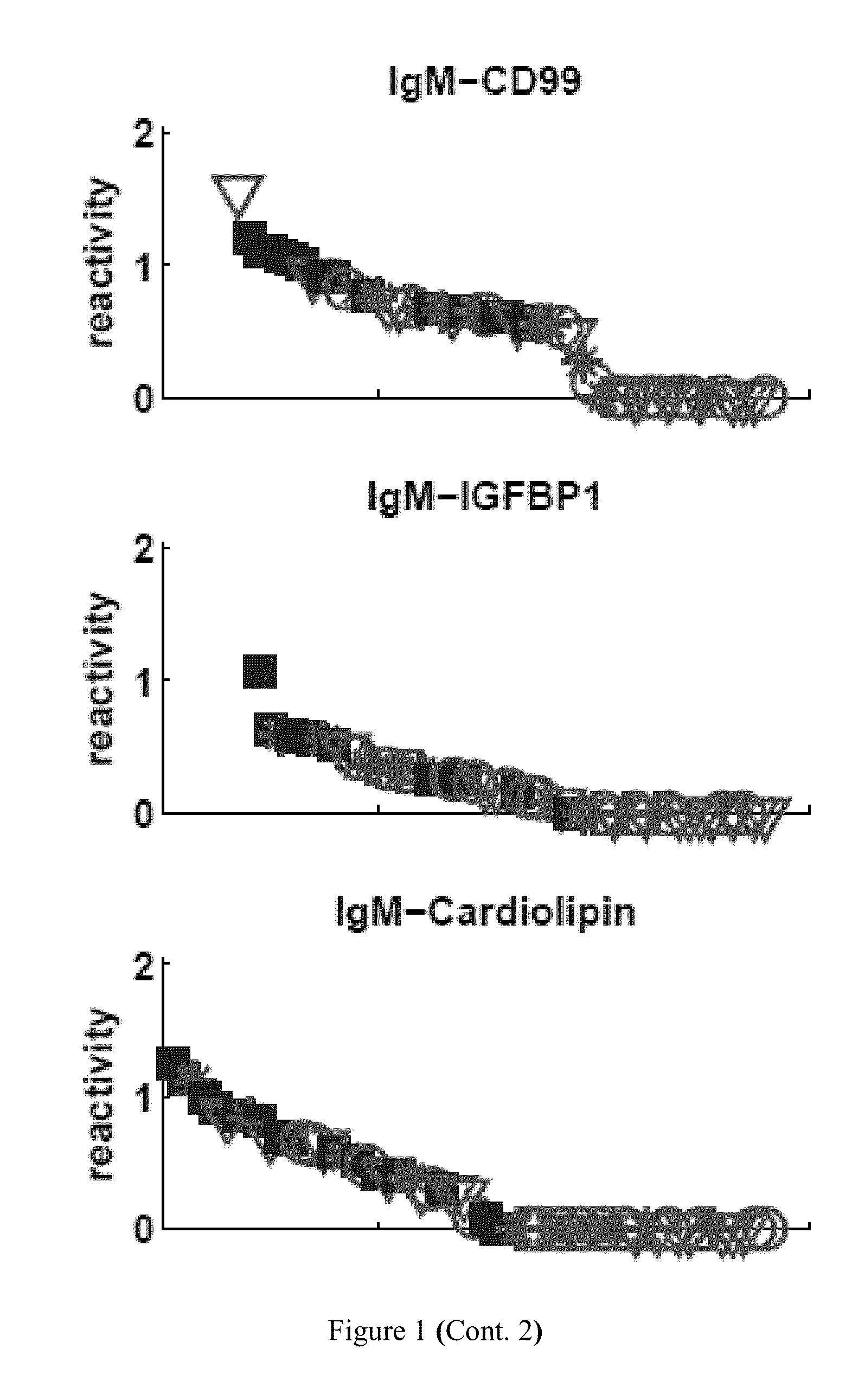Diagnosis of systemic lupus erythematosus
a systemic lupus and erythematosis technology, applied in the field of systemic lupus erythematosus diagnosis kits, can solve the problems of relapsing, chronic inflammation and eventually tissue damage, no reliable diagnostic markers have been identified, and clinicians or others cannot accurately define pathophysiological aspects, so as to achieve more accurate and reliable discrimination of sl
- Summary
- Abstract
- Description
- Claims
- Application Information
AI Technical Summary
Benefits of technology
Problems solved by technology
Method used
Image
Examples
example 1
Antigen Microarray Reactivities Differentiate SLE Subjects from Healthy Controls
[0218]Table 3 shows a global analysis of the 930 total antibody reactivities of the healthy control subjects compared with those of three SLE groups based on a leave one out (LOO) test: all SLE subjects; SLE subjects in renal remission; and SLE subjects with active lupus nephritis. The average LOO sensitivity and specificity are presented for a K=3 nearest neighbor classifier.
[0219]The analysis shows that the microarray reactivities clearly separated the three groups of SLE subjects from the healthy controls. A comparison between healthy controls and SLE subjects without renal involvement does not appear in the table because no antigen exceeded an FDR level of 5% in some of the LOO tests. Moreover, the various sub-groups of SLE subjects, with the limited numbers available for testing, also could not be separated from one another because none of the antigen reactivities passed an FDR level of 5% in any of...
example 2
SLE Subjects Manifest Both Up-Regulation and Down-Regulation of Individual Reactivities
[0220]Table 5 lists the particular antibody reactivities that distinguished all the SLE patients as a group from the healthy control subjects. Eight IgG antibody reactivities were up-regulated in the SLE group as compared to control: dsDNA, ssDNA, HyaluronicAcid, EBV, BMP4, F50, HGF and hsp60p18. Further, thirteen IgM antibody reactivities were down-regulated in the SLE group as compared to control: MPO, IGFBP1, CD99, Cardiolipin, actin, CMV, Collagen-III, Collagen-IV, HRP, RV, S100A4, CITED1 and FHIT.
[0221]Table 4 lists the particular antibody reactivities that distinguished all the SLE patients as a group from the healthy control subjects. FIG. 1 shows the relative amounts of antibody reactivities to the antigens listed in Table 4 in each serum. The differences between the two groups for each of these antigens exceeded an FDR level of 5% (p<0.0007). Four IgG antibody reactivities were up-regulat...
example 3
SLE Subjects in Remission Maintain an SLE Signature
[0224]An important question is whether clinical renal remission is associated with a return of the SLE antibody pattern to a healthy state. Table 6 shows that SLE patients in clinical remission still maintained an SLE signature. These patients manifested significantly up-regulated IgG reactivities to the same four antigens that characterized the general set of SLE subjects: dsDNA, ssDNA, hyaluronic acid and EBV. Moreover, those in remission manifested down-regulation of three IgM reactivities, of which two were characteristic of the SLE group as a whole: decreased IgM reactivity to CD99 and to MPO were present in both groups, but those in remission manifested decreased IgM reactivity to collagen III rather than to cardiolipin and to IGFBP1 (FIG. 1).
[0225]Table 6 also shows that combining the four increased IgG snd thr three decreased IgM reactivities led to 100% sensitivity and 94% specificity. Thus, a combination of reactivities ma...
PUM
| Property | Measurement | Unit |
|---|---|---|
| molecular mass | aaaaa | aaaaa |
| time | aaaaa | aaaaa |
| time | aaaaa | aaaaa |
Abstract
Description
Claims
Application Information
 Login to View More
Login to View More - R&D
- Intellectual Property
- Life Sciences
- Materials
- Tech Scout
- Unparalleled Data Quality
- Higher Quality Content
- 60% Fewer Hallucinations
Browse by: Latest US Patents, China's latest patents, Technical Efficacy Thesaurus, Application Domain, Technology Topic, Popular Technical Reports.
© 2025 PatSnap. All rights reserved.Legal|Privacy policy|Modern Slavery Act Transparency Statement|Sitemap|About US| Contact US: help@patsnap.com



